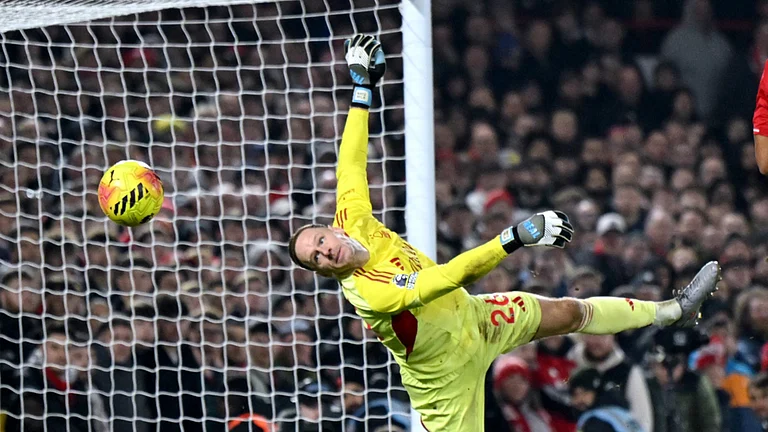The Supreme Court, on Wednesday evening, officially notified the recommendations made by its Collegium to the Centre for appointment of nine judges to the apex judiciary. Earlier in the day, CJI N.V. Ramana had publicly expressed his displeasure over the media’s speculations about the Supreme Court Collegium’s recommendations and said that there had been instances where “deserving career progression of bright talents getting marred because of such irresponsible reporting”. However, the official declaration confirmed the nine names that had been reported by the media.
The recommendations made by the Collegium, though they are yet to be accepted by the Centre, are significant on several counts. In recommending the nine names – three high court chief justices, five high court judges, including three women, and one senior advocate of the Supreme Court – the Collegium has broken a nearly two-year-long stalemate over recommendation of judges to be appointed to the apex court. For the first time in its history, the Collegium has recommended elevation of three women judges to the apex judiciary, including that of Karnataka High Court’s Justice B.V. Nagarathna, who could, even if just for a month, become the country’s first woman CJI in 2027 if the Centre clears her appointment. Justice Nagarathna’s father, the late Justice E.S. Venkataramiah, had also served as the CJI for six months between June 19, 1989 and December 17, 1989.
The list of names recommended does not include Tripura high court chief justice Akil Kureshi despite several legal luminaries and former Supreme Court judges, including the recently retired Justice Rohinton Nariman, repeatedly urging the Collegium for his elevation. The impasse in the Collegium for the past 22 months – spanning the latter months of former CJI Ranjan Gogoi’s tenure and the entire tenure of former CJI S.A. Bobde – over recommending appointments to the apex court bench, despite rising vacancies, was reportedly in part due to Justice Nariman steadfastly opposing any new recommendations that did not include Justice Kureshi. It is interesting that the Collegium’s recommendations, which do not include Justice Kureshi, come days after the retirement of Justice Nariman, who was part of the five-member Collegium since March 2019. The current Collegium comprises CJI Ramana and Justices U.U. Lalit, A.M. Khanwilkar, D.Y. Chandrachud and L. Nageswara Rao.
The Collegium’s recommendation also includes the name of former additional solicitor general (ASG) PS Narasimha; the only member of the Bar to figure in the current list for elevation to the Bench. Narasimha had represented the central government in several important matters before the Supreme Court and was also one of the lawyers appearing in the Ram Janmbhoomi-Babri Masjid title suit. Though he resigned as the government’s law officer in October 2018 citing personal reasons, he continues to be highly regarded among the government’s senior functionaries. If the Centre approves his appointment as an apex court judge, Narasimha will become only the sixth advocate to be elevated to the Supreme Court bench straight from the Bar.
The recommendations, if accepted by the Centre without delay and in totality, will pave the way for filling up all vacancies in the 33-member bench of the Supreme Court that have been created over the past two years. In making the recommendations after a 22-month deadlock, the Collegium has finally acted on its most crucial role on the administrative side of the apex judiciary. It is, of course, now on the government to act with haste in acting upon the recommendations.
What is, perhaps, more important for the common citizen is the impact that the Centre’s action – acceptance, rejection or delay – will have on the Supreme Court’s justice delivery system. It is common knowledge that the Covid pandemic had a significant adverse impact on the apex court’s justice delivery system – just as it had, to a much greater degree, on the high courts and the subordinate courts. The earlier months of the pandemic – the first Covid wave and then the second as also the varying degrees of lockdown – forced the court to opt for virtual hearings over physical courtroom hearings of matters.
With the court initially inclined to only hear “urgent matters” – although without any clarity on what actually constitutes such cases – the number of cases heard and disposed took an obvious hit. Pendency of cases, the biggest challenge in India’s justice delivery system, has become all the starker during the past year. The number of cases pending disposal before the Supreme Court in March 2021 was 66,727 (up to 69, 476 cases as on August 2) as against 60,469 cases in March 2020 when the Covid pandemic triggered the first nationwide lockdown. In March 2019, the number of pending cases in the Supreme Court stood at 57,785.
The other obvious casualty of a pandemic-hit court was its inability to hear a large number of important constitution bench matters that have been pending adjudication for various periods of time. As per official data, a total of 446 matters (49 main and 397 connected) are pending before constitution benches of various strengths (five judges, seven judges and nine judges). These include cases such as the challenges to abrogation of Article 370 and the constitutional validity of the CAA, among many others, whose outcome would have far-reaching political, social and legal repercussions.
Since September 2019, no new appointments have been made to the Supreme Court’s bench even though eight judges have retired from the court during this period, the most recent being Justices Nariman and Navin Sinha. Several of these judges were also part of various constitution benches but as the apex court was not hearing constitution bench matters for a better part of the past year, they retired before these cases could get closure. As a result, several constitution benches, particularly those with strength of seven or nine judges, now need to be reconstituted by the CJI.
While the Collegium has now discharged its crucial duty of recommending appointments to the Supreme Court, it is now up to the Centre to act on these recommendations. Any delay by the government that may hamstring the apex judiciary will inevitably stifle the justice delivery system. The Centre surely deserves all credit for expanding the sanctioned bench strength of the apex court to 33 judges – its highest ever in seven decades.

























